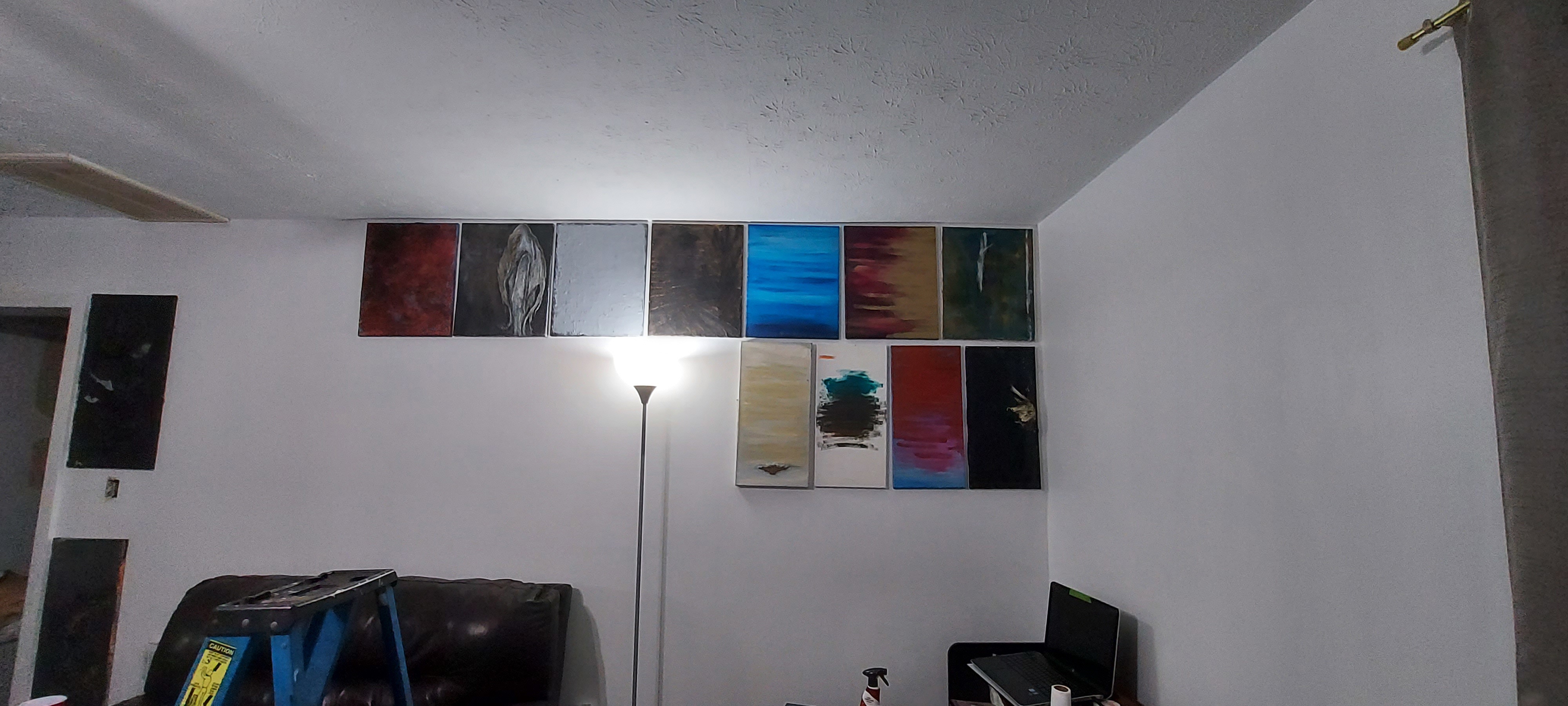I have a 4ft by 4ft canvas that I need to finish in 3-4months. My working space is not ideal and unfortunately I have no where else to work. I have to make do with this limited working area and I'm having a difficult time figuring out how to set up my canvas so that I can work on it. It'll be an acrylic (possibly with oil after the acrylic), personal piece for a client. No pouring or throw, he wants realism and lots of detail. I mention that because while there isn't a whole bunch of splashing or dripping that'll be happening, I'll need to use a decent amount of water to keep the acrylics from drying too quickly. (This is my situation; the vent is directly above where my canvas-the only space for it-is currently, it's been incredibly cold in the early morning/evening/at night and quite warm/humid most of the day which has the others in the house constantly turning the heater & air conditioning on and off. I can't leave the canvas out in the living space due to our cats, and there are no other areas in the house to put it. No garage.) Here is a picture of my canvas as I have is set up against the wall with brick of all things, to keep is steady. (Note: the blue tape is not even and I am very much aware of that). Any suggestions, recommendations, words of advice are more then just appreciated.
Edit: so I guess it wasn't clear enough to understand. Or maybe I didn't say it right. The reason I mention the heating/AC/etc. is to give y'all an idea of the environment in which I need to secure the canvas. There's really nowhere else to put it, and I'm not sure if the heat (from the heating) or the AC (air conditioning) would disturb the method of securing the canvas to the wall. (I.e. no glue - not strong enough/heat would weaken it, although that's kind of an obvious example, it's the best, most simple, one I can think of at the moment.) I know it sounds ridiculous, I hope this helps in understanding and if it sounds rude, that is not my intention.


